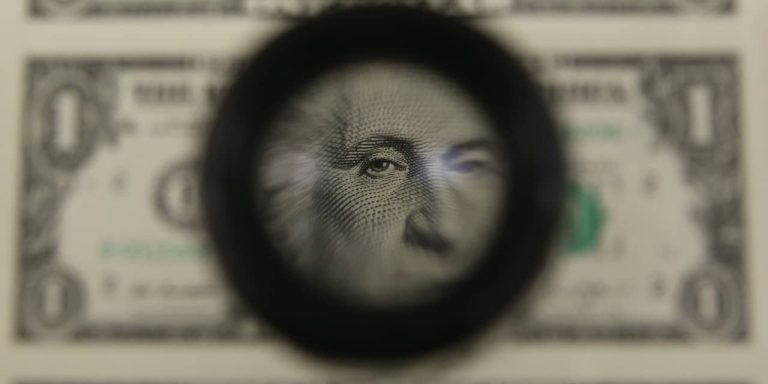The term premium is defined as the added yield investors demand for bearing risk associated with holding longer term debt.
Mark Wilson/Getty Images
A theoretical value that captivated Wall Street and sent bond yields higher has come back down to a more typical level. The reversal suggests a relative calmness has returned to bond markets.
Term premium reflects the additional return or yield investors expect for holding relatively riskier long-term U.S. bonds and notes instead of less risky shorter-term debt. This difficult-to-measure variable generated headlines and grabbed the attention of Wall Street strategists and Federal Reserve officials after turning positive for the first time in more than two years on Sept. 25 based on a model used by the New York Federal Reserve.
The model showed a peak in the term premium in mid-October. As of Nov. 21, the term premium has been in negative territory for three straight days after hovering near zero last week. The move lower comes alongside a drop in the 10-year yield, which has fallen 0.57 percentage points from its Oct. 19 high of 4.987%.
That’s welcome news for bondholders. A decline in premiums and yields raises the prices of bonds already held by investors, which in turn raises their total return. Take the
iShares U.S. Treasury Bond exchange-traded fund
(ticker: GOVT) and
Vanguard Total Bond Market ETF
(BND), for examples. This week, total returns for both are now positive after being in the negative since mid-September. The two ETFs saw record losses last year as bond yields rose.
Why has the term premium evaporated? For one, the reasons that drove the premium higher are now less of a problem. Premiums climbed after the Treasury Department announced a large supply of debt in its Quarterly Refunding announcement in August. This month’s announcement indicated a slower pace of debt increases.
Economic data helped, too. October‘s inflation data showed a 3.2% year-over-year gain in consumer prices versus 3.7% in September and a peak of 9.1% last year. Bond investors fear higher inflation as it can erode the real returns on bonds.
A surprise decline in labor costs also gave bond investors hope. Hourly compensation per unit of output declined 0.8% in the third quarter versus a year ago, November data showed. Consensus was for a 0.7% rise.
“Wages is the mother’s milk for inflation, and it has cooled off significantly,”David Rosenberg, economist and founder of Rosenberg Research told Barron’s. “And that is distinctly disinflationary,”
The unemployment rate ticked up to 3.9% in October, the highest level recorded since early 2022. Signs of slack in the labor market have given markets more confidence that the Fed is unlikely to further stress the economy with interest-rate hikes—and might discuss rate cuts, Rosenberg said.
Those data points prompted investors to buy longer-maturity bonds to lock in current yields before a rate cut pushed them lower. Take the case of the 20-year Treasury auction this week, which saw investors accept a 4.780% yield, lower than the 4.790% yield seen at the bidding deadline. More demand for Treasuries also leads to lower yields or premiums.
It’s not all sunny, though. Flights to longer-term securities typically take place when investors see recession risk, high-yield bond expert Marty Fridson and Rayliant Global Advisors Research Head Phillip Wool tell Barron’s, citing the probability of an economic downturn as a reason for the lower term premium.
The more fundamental factor in the retracement of yields is the “growing concern that ‘soft landing’ was wishful thinking, and the lagged behind impact of Fed policy is going to ultimately lead us into a recession after all,” Wool told Barron’s.
Write to Karishma Vanjani at [email protected]
Read the full article here









